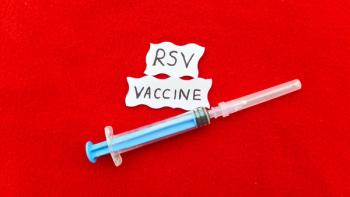
Wildfires Show Link to Increase of Psoriasis Flares for Adults
Air pollution from the California Camp Fire are associated with increased rates of clinical; visits, according to new study results.
Air pollution from a wildfire was associated with modestly increased rates of clinical visits for
This is consistent with reports of increased particulate matter 2.5 μm or less in diameter (PM2.5) within 60 days before an individual experiences a psoriasis flare.
To characterize air pollution in San Francisco, California, investigators used fire status, concentration of PM2.5 measured at ground level, and smoke plume density, ranging from 0 to 3, with 0 indicating none, 1 indicating light, 2 indicating medium, and 3 indicating heavy, based on satellite imaging.
Investigators collected data for outpatient dermatology visits for psoriasis at an academic medical center between October 1, 2018, and February 10, 2019, including the California Camp Fire, October 1, 2015, to February 10, 2016, and October 1, 2016, and February 10, 2017, which both included no fires.
Statistical analyses were performed between December 20, 2021, and March 10, 2022, and outcome data on clinic visits were stratified by age group of less than aged 18 years to aged 18 years or older. Investigators analyzed the data using generalized Poisson regression.
Furthermore, the models included 11 1-weekexposure lags, and investigators adjusted for age, humidity, overall patient volume at clinics, temperature, and year.
They also collected data for weekly online search interest data, such as the Search Value Index (SVI), from Google Trends.
They specifically looked for the term “psoriasis” in San Francisco in 2018.
Investigators included 986 clinic visits for 914 adults and 72 children with psoriasis.
For adults, the earliest significant increase of clinic visits by fire status for psoriasis occurred at the 5-week lag and peaked at the 8- and 9-week lag. There were no significant results for children with psoriasis.
Additionally, the mean weekly SVI for psoriasis occurring between October 4, 2018, and January 30, 2019, increased in search volume at 5 weeks after the fire and peaked at 8 weeks after the fire.
Investigators thought that the online search for psoriasis in San Francisco would appear as soon as individuals experience symptoms but started 5 weeks after the California Camp Fire.
Furthermore, they think that the air pollutants cause upregulation in genes associated with inflammation and psoriasis, which could have contributed to the disease flare.
Investigators acknowledged limitations of the study, including that their focus was on just 1 wildfire, which affected San Francisco from a distance. The study also included a small number of children, so findings could not be verified.
The minority population in the study was also underrepresented, so the results may also be unrepresentative of the subgroup population.
Further studies should be conducted to include other locations that have a presence of wildfires, they said.
Investigators think that understanding the environmental triggers could help physicians counsel patients, especially with pollution-induced flares.
Reference
Fadadu RP, Green M, Grimes B, Jewell NP, et al. Association of wildfire air pollution with clinic visits for psoriasis. JAMA Netw Open. 2023;6(1):e2251553. doi:10.1001/jamanetworkopen.2022.51553
Newsletter
Stay informed on drug updates, treatment guidelines, and pharmacy practice trends—subscribe to Pharmacy Times for weekly clinical insights.




















































































































































































































